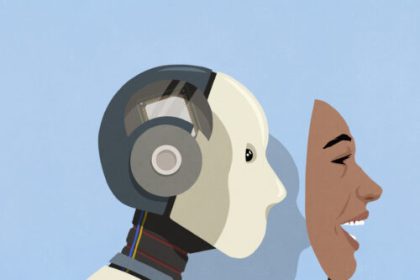Comment Few IT leaders or staffers realize just how much automation, AI, and cloud delivery are disrupting the legal and human frameworks that underpin outsourcing – especially when it comes to the Transfer of Undertakings (Protection of Employment) Regulations 2006, better known as TUPE.
According to a recent McKinsey report, 92 percent of companies plan to increase AI and tech investment, yet only 1 percent consider themselves to be AI-mature – a gap that is creating legal gray areas and operational risk during supplier transitions.
So how are AI, automation and cloud-based service models disrupting the traditional rules of TUPE and what does this means for IT outsourcing contracts and the people behind them?
When TUPE applies (or doesn’t)
TUPE – a set of UK regulations derived from European Union law – was designed to protect employees when services are outsourced or transferred. But what happens when the new supplier doesn’t need people because the work is now done by AI, bots, or cloud platforms?
The key legal test is whether the new service is “fundamentally the same” as the old one. If it is, TUPE will usually apply. If not, it doesn’t. So, if your new IT support contract replaces on-site engineers with a cloud-based helpdesk and automated diagnostics, TUPE may not apply.
By contrast, a robot that vacuums floors might supplement but not replace a human cleaner who also wipes surfaces, empties bins and restocks toilet paper. Where the core service still involves material human-centric tasks, TUPE will probably still apply.
The same goes for IT services. If a cloud provider takes over infrastructure management but support activities remain unchanged, TUPE could still kick in. But if the delivery model for support services also shifts so radically that the old and new activities are barely comparable, TUPE may not apply — and the staff stay put.
Hybrid models and phased transformations can be grey areas. If some tasks are automated but others remain human-led either in the short or longer term, there could be challenges over whether the service is “fundamentally the same.”
Who pays when staff don’t transfer
If TUPE doesn’t apply, the outgoing supplier (or the customer, in the case of first-time outsourcing) is responsible for redeployments or, more likely, redundancies – and the associated costs.
If TUPE does apply, the new supplier inherits the staff. However, if it needs fewer headcount thanks to automation, it will be responsible for the associated redundancies. If the outgoing supplier did not anticipate this and did not factor recovery of redundancy cost into the contract, it will be responsible.
What you should do
Smart suppliers and customers are already adapting their contracts to reflect this new reality.
Here’s what to include:
Redundancy cost clauses: outline who pays if TUPE doesn’t apply
TUPE risk allocation: agree upfront who carries the risk if there’s a dispute
Transformation timing: clarify whether automation happens at contract start or mid-term and if it is mid-term, who bears the cost of associated redundancy, and
Exit planning: prepare for the possibility that TUPE won’t apply at the end of the contract because the services are to be replaced with AI or tech in future
Hangover from messy Walmart tech divorce ongoing at Asda
Sungard UK offloads three datacenters to Redcentric
Check the TUPE: Facebook’s hire of Bloomsbury AI founders wasn’t ‘traditional’ acquisition – so sacked bod can’t claim law was broken
IBM warns Global Tech Services staff that 346 UK heads will roll in latest redundancy action
Incoming suppliers should also factor potential redundancy costs into their pricing, or negotiate cover from the customer. Outgoing suppliers should know their rights and push for better protection where possible.
Too often, TUPE is treated as an afterthought. But in tech-driven transformations, it needs to be front and center – from procurement through to contract exit. As AI and cloud continue to reshape service delivery, suppliers and customers need to rethink their assumptions, update their contracts, and collaborate across functions to manage the legal, financial, and human risks.
Early planning, clear contractual terms, and a focus on employee impact will be key to managing the risks and opportunities of service transformation. TUPE is just one of many reasons why AI demands a people first mindset. ®
This article was written for The Register by Rebecca Jones, legal director at national law firm TLT.












